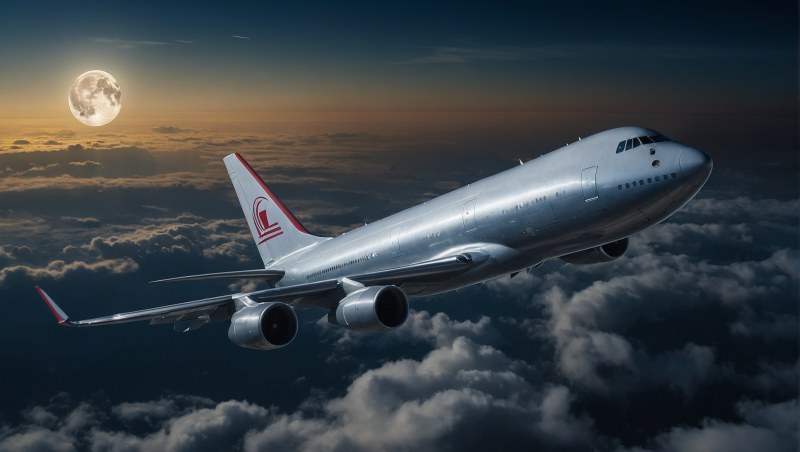WorldACD's weekly report on global air cargo transport, released on March 1st, 2024, reveals that the last week of February, immediately following the traditional dip due to Chinese Lunar New Year celebrations, saw a considerable recovery in volumes. This increase is particularly noticeable in major sea-air transshipment hubs between Asia and Europe, such as Dubai, Colombo, and Bangkok, which continue to experience a sharp rise in tonnages, a direct consequence of the disruptions in container shipping caused by the Red Sea crisis.
Indeed, the recent surge in demand for air cargo, as highlighted by WorldACD's analysis based on over 450,000 weekly transactions, is linked to shippers seeking quick and economically viable alternatives due to the elongation of supply chains by Houthi attacks in the Red Sea. Notably, air freight traffic from Dubai to Europe in the eighth week has more than doubled (+146%) compared to the same period last year, with an average tonnage in the last two weeks (weeks seven and eight) up by 140% year-on-year.
Tonnages from Colombo to Europe also showed an increase of over 80% year-on-year in weeks seven and eight. Air cargo traffic from Colombo to Europe has been growing since August 2023, after a dip in the first half of last year, but the increases have been more pronounced since December, with a 46% rise, climbing to 60% in January, and further to 80% in the last three weeks year-on-year. Similarly, volumes from Bangkok to Europe saw an increase of at least 40% year-on-year during the first seven weeks of this year, although this trend showed signs of slowing in the eighth week, with a 15% increase, suggesting a possible moderation in demand on this route.
It remains to be seen whether the recent surge in demand through these Asia-Europe sea-air hubs has been influenced or bolstered by the Chinese New Year, which fell on February 10th this year, and whether the strong demand via Dubai and Colombo will continue into March. However, the eighth week showed no signs of demand reduction.
These significant volumes contributed to a global increase in air transport tonnages of 9% on a weekly basis in the eighth week (February 19-25), following a 10% decrease in the previous two weeks, although the increase in the eighth week was primarily due to the recovery of volumes following the usual dip during the Chinese New Year holiday week. Global average freight rates saw a slight increase of 2% this week, after an 8% decrease in the previous week.
A two-week comparison reveals a complex picture, with demand influenced by various factors including the Chinese New Year and the annual spike in flower shipment demand ahead of Valentine's Day on February 14, in addition to the effects of maritime transport disruptions in the Red Sea. Overall, global tonnages in weeks seven and eight registered an 11% decrease compared to the two weeks prior, with significant drops from the Asia-Pacific (-24%) and former Central and South America (-25%) origins, reflecting the Chinese New Year and Valentine's Day factors, respectively.
Tonnages from Africa decreased by 8%, and from former North America by 1%, while the origin region of Europe saw a 3% increase on a bi-weekly basis. However, the Middle East and South Asia origin region, like the previous week, was the only one to show a significant increase in average tonnages (+11%) and freight rates (+13%).
Average rates from other major origin regions remained stable (Europe and North America) or decreased, on a bi-weekly basis, with slight reductions from former Africa (-3%) and former Central and South America (-4%), while average prices from former Asia-Pacific dropped by 11%. This decrease in prices from former Asia-Pacific, and the sharp decrease in tonnages from the high-yield Asia-Pacific exit market, were major factors putting downward pressure on global average prices in these two weeks, despite an increase in prices from former Middle East and South Asia.
Examining major international air cargo corridors, the Middle East and South Asia to Europe was the only significant intercontinental corridor to show a marked increase in average prices (+19%) – likely a reflection of the recent surge in traffic from Asia-Pacific to Europe converted to sea-air – with tonnages on this route significantly increasing (+14%). However, most other routes recorded bi-weekly declines consistent with post-Chinese New Year and Valentine's Day effects.
Tonnages from Asia-Pacific to Europe, North America, and Middle East and South Asia decreased by 29%, 28%, and 33%, respectively, while northbound tonnages from Central and South America to North America dropped by 34%, with an 11% decrease in average prices. Tonnages from Africa to Europe also significantly decreased (-9%), while intra-Asia-Pacific volumes recorded a 10% drop, on a bi-weekly basis – having suffered a sharp decline in the period before and after the Chinese New Year.
Year-on-year comparisons show a 4% decrease in total global tonnages for weeks seven and eight, driven downward by an 11% drop from former Asia Pacific and partially offset by a 27% increase from former Middle East and South Asia.
In terms of prices, average yield rates of $2.25 per kilo in the eighth week are 18% lower compared to the same period last year, with rates from Europe and North America down by 31% and 21%, respectively, and prices from Asia down by 14%, while rates from former Middle East and South Asia increased by 9%, year-on-year. However, average global rates remain significantly above pre-Covid levels (+26% compared to February 2019). The overall global capacity of air cargo transport remains significantly higher than last year's levels (+8%).



































































